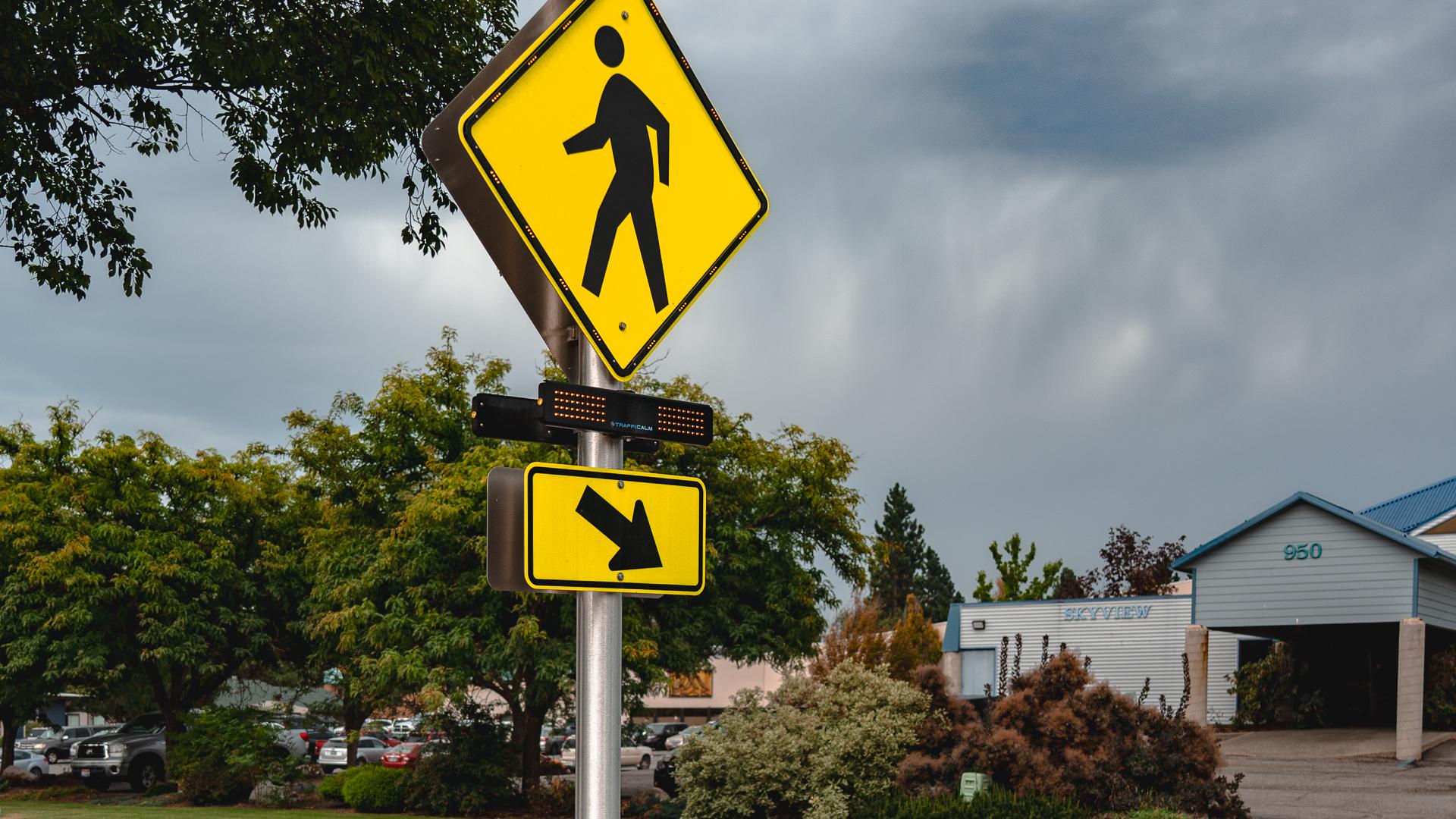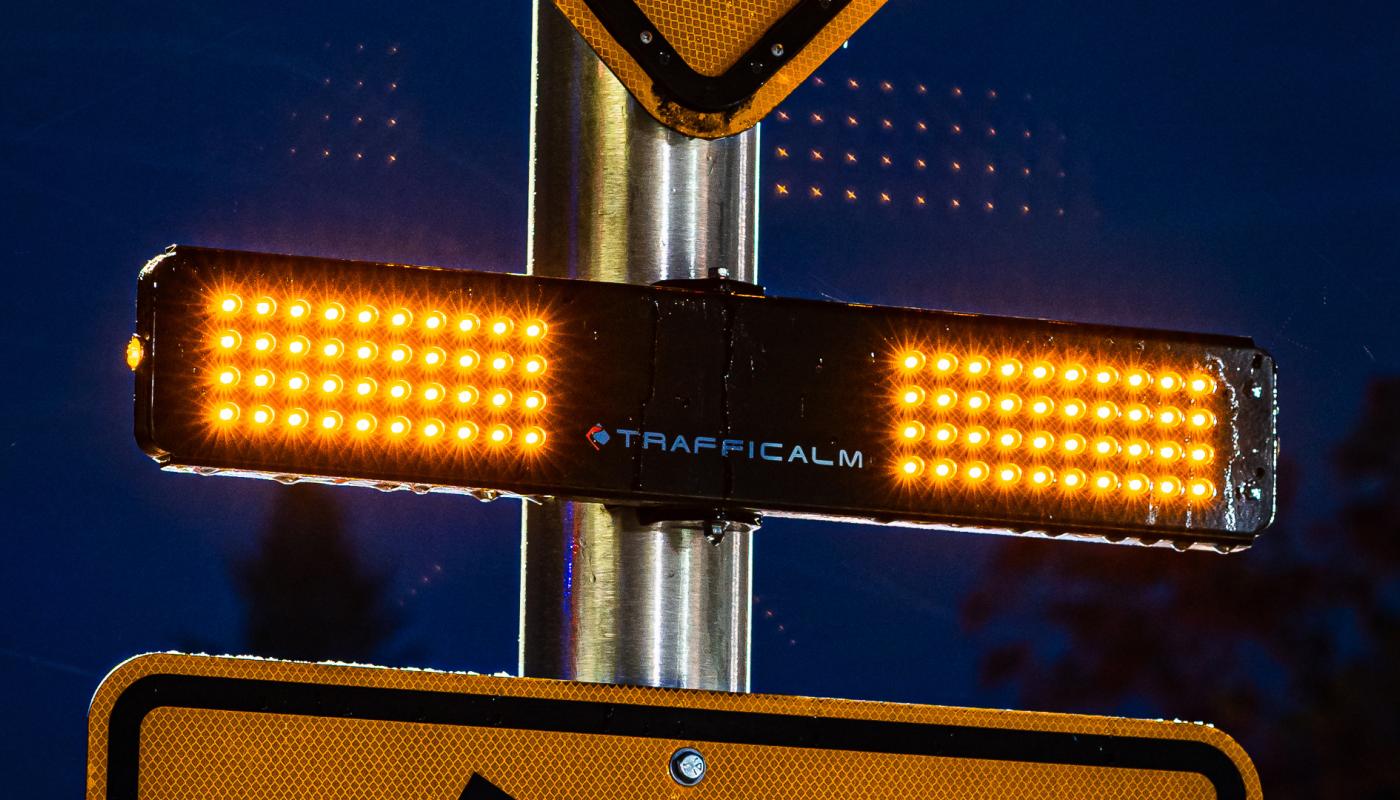Summary
The challenge of ensuring pedestrian safety in the United States, particularly on high-speed, high-volume, multi-lane roads, has necessitated the evaluation of various pedestrian crossing treatments. This study focused on establishing crash modification factors (CMFs) for several interventions aimed at enhancing pedestrian safety at unsignalized crossings.
Rectangular Rapid Flashing Beacons (RRFBs) and Other Pedestrian Safety Interventions
The study concentrated on four main types of pedestrian safety treatments:
- Rectangular Rapid Flashing Beacons (RRFBs)
- Pedestrian Hybrid Beacons (PHBs)
- Pedestrian Refuge Islands
- Advanced YIELD or STOP Markings and Signs
- PHBs + Advanced YIELD or STOP Markings and Signs
Among these, RRFBs emerged as a significant intervention, offering a promising CMF of 0.526, indicating a notable reduction in pedestrian crash risk. The study revealed the substantial safety benefits of RRFBs, along with PHBs, pedestrian refuge islands, and advanced markings, in mitigating pedestrian crashes.
Study Methodology and Data Collection
The research spanned approximately 1,000 treatment and comparison sites across 14 diverse cities in the United States, focusing on urban, multi-lane intersections where pedestrian crashes are prevalent. Detailed data were gathered on treatment characteristics, traffic volumes, and crash incidents to facilitate a comprehensive analysis.
Findings and Implications
All evaluated treatments demonstrated a reduction in pedestrian crash risk, underscoring their efficacy in improving pedestrian safety. The study's findings support the implementation of RRFBs and other treatments in urban and suburban areas to protect pedestrians.
- Pedestrian Hybrid Beacons (PHBs) showed the most significant reduction in pedestrian crash risk, with CMFs of 0.453 and 0.432 (when combined with advanced markings).
- RRFBs reported a CMF of 0.526.
Pedestrian Refuge Islands and Advanced YIELD or STOP Signage also contributed positively to pedestrian safety, with CMFs of 0.685 and 0.75, respectively.
Recommendations for Future Research
The study underscores the necessity for careful application of these CMFs, considering the specific conditions of the site in question. Given the limitations in sample size for RRFBs, further research is recommended to validate these findings and explore the treatments' effectiveness under various traffic conditions and settings.
This comprehensive analysis lays a foundation for enhancing pedestrian safety through targeted interventions, including RRFBs, while also highlighting areas for future investigation to refine and expand our understanding of effective pedestrian safety measures.
Project Overview
The safety of pedestrians crossing high-speed, high-volume, multi-lane roads in the United States remains a significant concern. Despite various studies on the impact of geometric and traffic control treatments at unsignalized crossings, there's an evident gap in crash-based evaluations for pedestrian safety interventions. This gap stems from the challenges in accumulating sufficient sample sizes for statistical validation, given the lower frequency of pedestrian crashes compared to vehicle-vehicle collisions. Addressing this requires broader, longer-term evaluations to develop actionable crash modification factors (CMFs) or functions (CMFunctions) that can guide the selection of effective pedestrian crossing treatments.
Objectives and Selection of Pedestrian Crossing Treatments
The primary goal of this project was to establish CMFs for diverse pedestrian treatments at unsignalized crossings, aiming to evaluate their efficacy under various traffic and roadway conditions. Initial candidate treatments included:
- Unsignalized pedestrian crosswalk signs and pavement markings
- Pedestrian hybrid beacons (PHBs)
- Rectangular rapid flashing beacons (RRFBs)
- Pedestrian refuge islands
- Curb extensions
- In-pavement warning lights
- High-visibility crosswalk marking patterns
- Raised crosswalks
Due to limitations in finding sufficient samples for raised crosswalks and in-pavement warning lights, along with consideration of local and state officials' interest, four treatments were ultimately selected for thorough evaluation:
- RRFBs
- PHBs
- Pedestrian refuge islands
- Advanced YIELD or STOP markings and signs
These selections were driven by the need to focus on interventions most relevant and promising for enhancing pedestrian safety, especially on roads where the risk to pedestrians is heightened.
Data Collection Methodology
The study's data collection phase encompassed:
- Identification of suitable treatment and comparison sites for in-depth analysis
- Gathering of basic site characteristics and pedestrian count data to estimate pedestrian average annual daily traffic (AADT)
- Collection of vehicle AADT at both treatment and comparison sites
- Compilation of crash data encompassing both pedestrian-specific and total crash instances
This comprehensive approach aimed to not only capture the immediate impact of selected treatments on pedestrian safety but also to pave the way for future research. By focusing on multi-lane, high-volume roads, the study targeted areas with the highest need for effective pedestrian safety countermeasures, reflecting a strategic approach to addressing pedestrian safety concerns across varied urban landscapes.
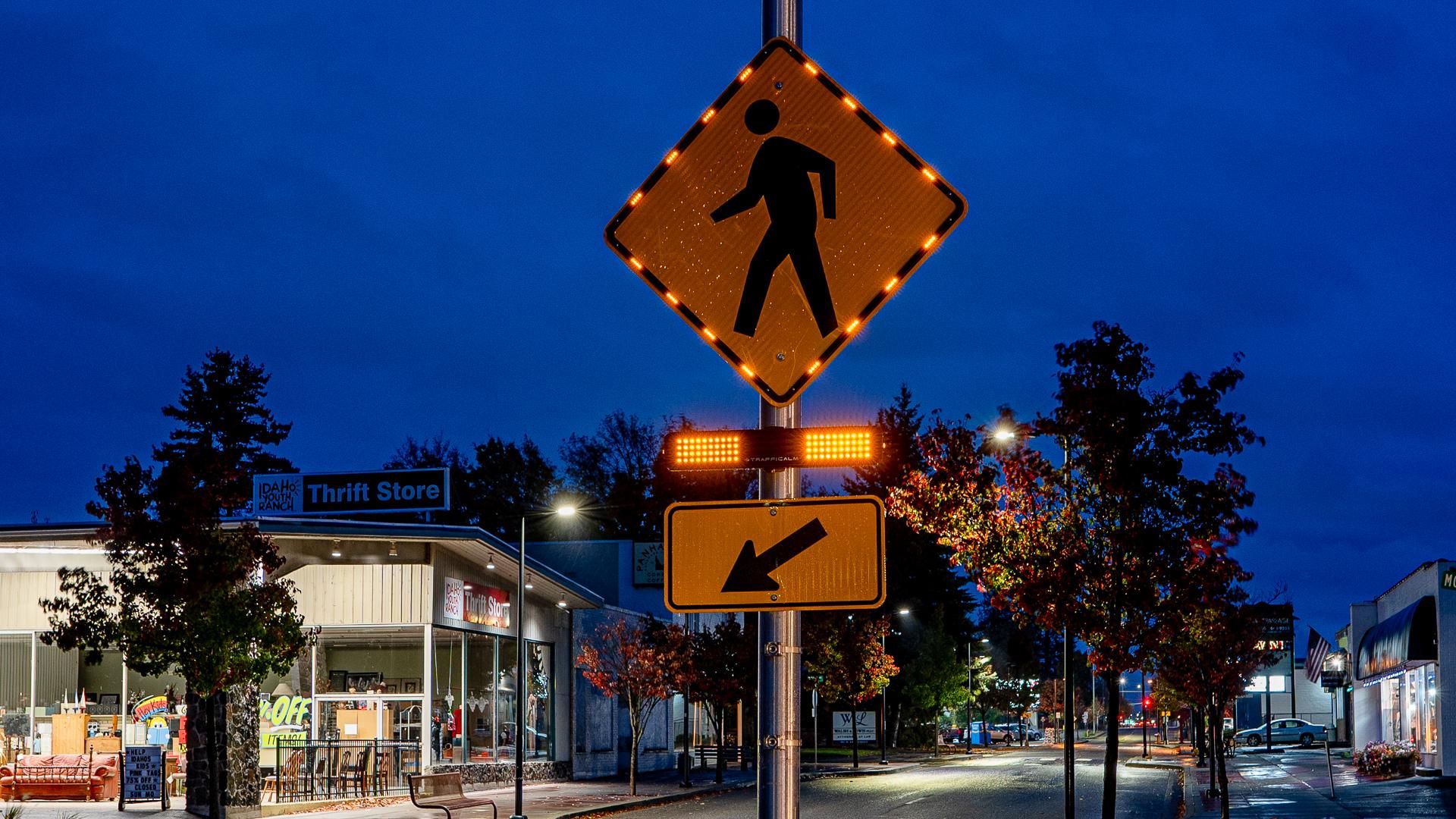
Literature Review
Rectangular Rapid Flashing Beacons (RRFBs) have emerged as a pivotal innovation in pedestrian safety, particularly at midblock crossings and unsignalized intersections. These beacons, characterized by their high-intensity, irregular flashing patterns, aim to significantly enhance the visibility of pedestrian crossings to approaching motorists. Initially receiving interim approval by the Federal Highway Administration (FHWA) in 2008, RRFBs utilize amber light-emitting diode (LED) technology to draw attention to pedestrian crossing points, which can be either automated or activated by pedestrians themselves.
Effectiveness of RRFBs
A comprehensive review of nine studies focusing on the impact of RRFBs on pedestrian safety reveals a unanimous conclusion: RRFBs markedly increase motorist yielding behavior. This heightened compliance with pedestrian right-of-way significantly contributes to a reduction in pedestrian-vehicle conflicts, thereby enhancing the safety of pedestrians at critical crossing points. The eye-catching flash pattern of RRFBs, designed to mimic emergency vehicle lights, plays a crucial role in this improved motorist awareness and response.
TraffiCalm's Contribution to Pedestrian Safety
TraffiCalm Systems, a leader in traffic calming solutions, has incorporated RRFB technology into its broader pedestrian safety ecosystem. This comprehensive suite of safety tools includes crosswalk illuminators, flashing LED rings, radar speed signs, and a robust push-to-cross system, all engineered to maximize pedestrian visibility and safety, especially at mid-block crossings.
- Crosswalk Illuminators: These devices enhance the nighttime visibility of crosswalks, making pedestrians more noticeable to oncoming traffic.
- Flashing LED Rings: Installed around pedestrian crossing signs, these rings provide additional visual alerts to drivers, highlighting the presence of a crossing.
- Radar Speed Signs: These signs alert drivers of their current speed, encouraging them to slow down in pedestrian-heavy areas.
- Push-2-Cross System: A pedestrian-activated system that integrates seamlessly with RRFBs, offering a proactive measure for pedestrians to alert motorists of their intention to cross.
The integration of RRFBs within TraffiCalm's pedestrian safety ecosystem represents a holistic approach to addressing pedestrian vulnerabilities, particularly at mid-block crossings where pedestrian traffic is high, and traditional signalized intersections are absent. By focusing on both enhancing visibility and encouraging motorist compliance, TraffiCalm's solutions, including the innovative use of RRFBs, demonstrate a commitment to creating safer urban environments for pedestrians across various settings.
Data Collection
Methodologies for Identifying Pedestrian Safety Treatments
The research team for NCHRP Project 17-56 embarked on a comprehensive approach to identify cities and states with installations of pedestrian crossing treatments at unsignalized intersections, focusing notably on Rectangular Rapid Flashing Beacons (RRFBs). Utilizing a multifaceted strategy that included leveraging the Walk Friendly Communities program, engaging with pedestrian coordinators, and reaching out through professional networks like the Association of Pedestrian and Bicycle Professionals, the team cast a wide net to gather a broad dataset.
City Selection and Site Characteristics
From the extensive outreach and data gathering efforts, 14 cities across the United States were chosen for detailed study. These cities, selected based on the diversity of pedestrian treatments and geographic distribution, offered a rich field for evaluating the effectiveness of treatments like RRFBs on pedestrian safety. The focus was primarily on urban, multi-lane streets where pedestrian safety risks are heightened, and countermeasures like RRFBs are most needed.
RRFBs Among Evaluated Treatments
RRFBs, known for their high-intensity, irregular flashing patterns, were one of the primary treatments under scrutiny. Their design is aimed at enhancing the visibility of pedestrian crossings, particularly at midblock locations or unsignalized intersections, by capturing the attention of motorists with an eye-catching flash pattern similar to emergency vehicles.
Combination Treatments and Their Efficacy
The study highlighted the frequent combination of RRFBs with other treatments, such as advanced YIELD or STOP markings and signs, indicating a holistic approach to pedestrian safety. These combinations, especially RRFBs paired with refuge islands for sites with high Annual Average Daily Traffic (AADT), underscore the potential for layered safety strategies to mitigate pedestrian crash risks.
Pedestrian Safety Insights
The analysis of treatment sites revealed a compelling narrative on the efficacy of RRFBs and other pedestrian safety interventions. The comprehensive data collection and subsequent analysis aimed at developing Crash Modification Factors (CMFs) for these treatments, providing a quantitative measure of their impact on reducing pedestrian crash risks.
Insights into RRFBs' Contribution to Safer Streets
The exploration into the deployment and efficacy of RRFBs within a diverse range of urban environments illustrates their vital role in pedestrian safety initiatives. The comprehensive approach to gathering and analyzing data on pedestrian crossing treatments, particularly RRFBs, offers a foundational understanding of how such interventions can significantly reduce the risk of pedestrian-related incidents. This study not only reinforces the value of RRFBs in the urban safety toolkit but also sets the stage for a deeper dive into their performance through the subsequent data analysis phase.
Data Analysis
Data Analysis: Focusing on RRFBs
The Core Analysis
The examination of Rectangular Rapid Flashing Beacons (RRFBs) within the larger context of enhancing pedestrian safety at unsignalized crossings is pivotal. This section dives deep into the methodological approach employed to discern the impact of RRFBs, leveraging cross-sectional regression analysis and before-after evaluation methods. The primary objective revolves around the development of crash modification factors (CMFs) for RRFBs, signifying their effectiveness in mitigating pedestrian-vehicle conflicts.
Understanding RRFBs' Impact Through Data
RRFBs stand out for their distinctive, irregular flashing pattern designed to catch the attention of motorists, thus significantly improving pedestrian visibility and safety. The data analysis segment scrutinizes the crash data before and after the implementation of RRFBs across multiple locations. This involved a meticulous collection and examination of crash incidents, pedestrian and vehicle volumes, and the geometric features of the sites.
Methodological Rigor
The analysis adhered to stringent statistical methodologies, including the Empirical Bayes (EB) method for before-after studies and Generalized Linear Modeling (GLM) for cross-sectional analysis. These approaches allowed for a nuanced understanding of RRFBs' effectiveness, accounting for regression to the mean and other confounding factors that might skew the results.
Revealing Findings
The outcomes highlight RRFBs as a robust solution for enhancing pedestrian safety. The CMFs derived from the analysis underscore a significant reduction in pedestrian crashes at sites where RRFBs were deployed. This aligns with the broader goal of ensuring safer pedestrian crossings, especially on high-speed, multi-lane roads where the risk of accidents is markedly higher.
TraffiCalm's Advanced RRFB Solution
TraffiCalm, as a leading provider of traffic calming solutions, offers an advanced RRFB system that incorporates state-of-the-art technology to ensure maximum visibility and durability. Their solution is engineered for ease of installation and long-term reliability, making it an ideal choice for municipalities and traffic engineers seeking to enhance pedestrian safety effectively.
Data Summary: Advocating for RRFBs
The data analysis strongly advocates for the widespread adoption of RRFBs as a key measure in reducing pedestrian-vehicle collisions. TraffiCalm's innovative RRFB solution stands as a testament to the potential of technology to safeguard pedestrian crossings. By embracing these advanced systems, communities can take a significant step forward in ensuring the safety of pedestrians, aligning with broader traffic safety and smart city initiatives.
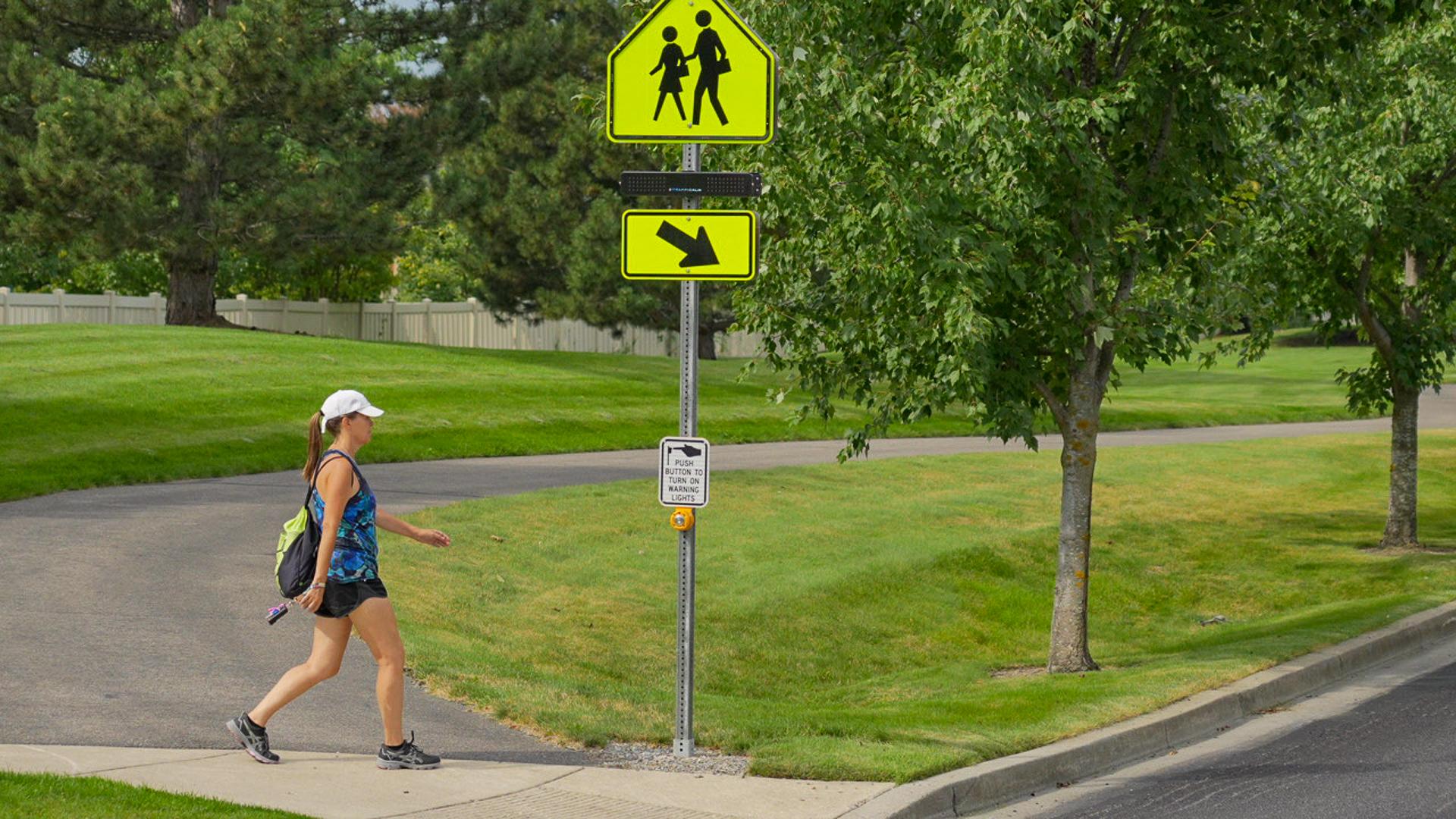
Summary and Conclusions
Emphasizing the Efficacy of RRFBs
The comprehensive analysis delves into the effectiveness of Rectangular Rapid Flashing Beacons (RRFBs) alongside other pedestrian safety measures. This investigation underscores a significant stride towards mitigating pedestrian-vehicle conflicts, especially on high-speed, multi-lane roads. Among the array of treatments assessed, RRFBs, with a CMF of 0.526, emerge as a robust mechanism for enhancing pedestrian safety, marking a substantial decrease in pedestrian crashes.
The study's methodology, blending cross-sectional and before-after evaluations, fortifies the reliability of the findings. It's evident that RRFBs, as part of a cohesive pedestrian safety strategy, significantly contribute to a safer pedestrian crossing environment. The data not only champions the deployment of RRFBs but also outlines the situational criteria under which their effectiveness is maximized.
TraffiCalm's RRFB Solution: A Step Forward in Pedestrian Safety
TraffiCalm's RRFBs epitomize the advancement in pedestrian safety solutions. Engineered with cutting-edge technology, these beacons ensure unmatched visibility and durability, thereby offering an effective countermeasure against pedestrian-vehicle incidents. The incorporation of TraffiCalm's RRFBs into pedestrian safety systems represents a pivotal development in mitigating collision risks, particularly in high-risk areas.
Criteria for Treatment Installation: Tailoring Solutions to Specific Needs
The selection criteria for RRFB installation underscore the need for a nuanced approach in addressing pedestrian safety. Key considerations include:
Installation Specifications: Ensuring optimal visibility and compliance with luminosity standards is crucial. The positioning of RRFBs, particularly on multi-lane roads with medians or refuge islands, plays a pivotal role in their effectiveness.
Roadway Characteristics: The application of RRFBs is particularly recommended for roads with speed limits between 25 and 35 mph and high AADTs, where pedestrian crossing risks are accentuated.
Complementary Measures: The integration of high-visibility crosswalk markings and advanced yield or stop markings significantly enhances the efficacy of RRFBs in reducing pedestrian crashes.
Public Outreach: Educating the community about the function and benefits of RRFBs is vital, especially in regions where their usage is nascent.
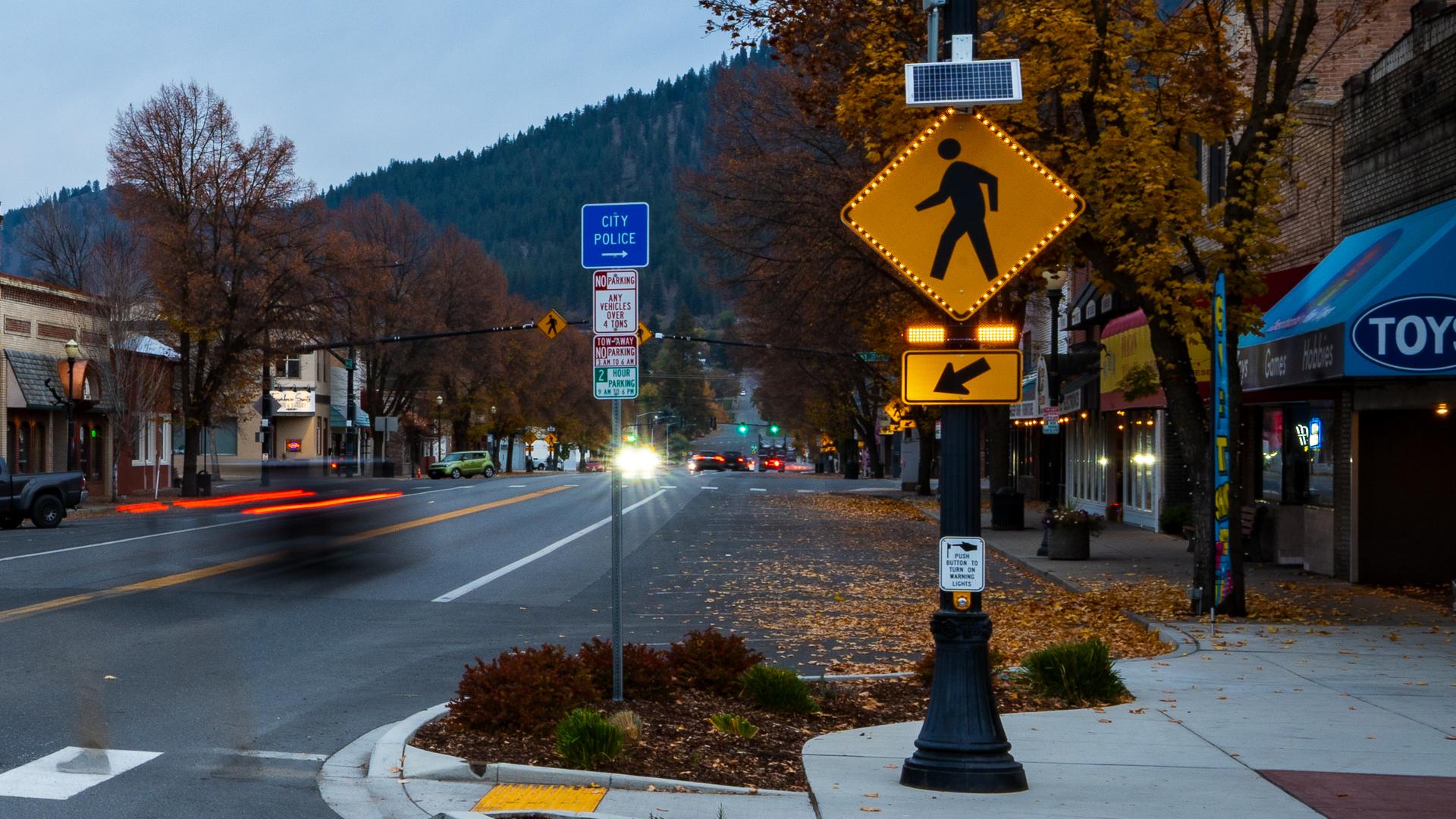
FAQ: Frequently Asked Questions
RRFBs and TraffiCalm Pedestrian Safety Solutions
What are Rectangular Rapid Flashing Beacons (RRFBs)?
Rectangular Rapid Flashing Beacons (RRFBs) are pedestrian-activated, high-intensity, irregular flashing lights used to enhance crosswalk visibility. They significantly increase driver awareness of pedestrian crossings, particularly on high-speed, multi-lane roads.
How do RRFBs improve pedestrian safety?
RRFBs command driver attention with their distinctive, irregular flashing patterns, increasing the likelihood that drivers will yield to pedestrians at crosswalks. Studies, including data analysis on their effectiveness, have shown a significant reduction in pedestrian-vehicle conflicts where RRFBs are installed.
Why choose TraffiCalm's RRFB solutions?
TraffiCalm's RRFB solutions are designed with the latest technology for optimal visibility and durability. Their systems are easy to install, require minimal maintenance, and are engineered to withstand various environmental conditions, making them a reliable choice for enhancing pedestrian safety.
Can RRFBs be installed on any road?
While RRFBs are versatile, their installation is particularly recommended for high-speed, multi-lane roads without signalized pedestrian crossings. Criteria such as road speed, volume, and pedestrian traffic patterns should be considered to ensure their effectiveness.
Are RRFBs the only pedestrian safety solution offered by TraffiCalm?
No, TraffiCalm offers a comprehensive range of pedestrian safety solutions including crosswalk illuminators, flashing LED rings, radar speed signs, and the complete push-2-cross system ideal for mid-block crossings. These solutions can be integrated to create a holistic safety ecosystem for pedestrians.
How do other TraffiCalm pedestrian safety solutions complement RRFBs?
TraffiCalm’s pedestrian safety ecosystem is designed to address various aspects of pedestrian visibility and driver awareness. For example, crosswalk illuminators enhance crosswalk visibility during low-light conditions, while radar speed signs can slow down traffic approaching pedestrian zones, creating a safer environment in conjunction with RRFBs.
Is public outreach necessary when installing RRFBs?
Yes, public outreach is crucial to educate both drivers and pedestrians about the function and benefits of RRFBs, especially in areas where they are newly introduced. Understanding how to use these devices properly ensures their effectiveness in enhancing pedestrian safety.
How are RRFBs activated?
RRFBs are typically pedestrian-activated, either by push-button or passive detection. This activation method ensures that the flashing beacons are used only when pedestrians are present, thereby maximizing their impact on driver behavior.
Can RRFBs be installed at school crossings?
Yes, RRFBs are highly effective at school crossings and other locations where children frequently cross the street. Their high visibility helps in significantly reducing the risk of pedestrian accidents in such sensitive areas.
What maintenance is required for RRFBs?
TraffiCalm’s RRFBs are designed for low maintenance with durable components and energy-efficient LED lights. Regular inspections and cleaning are recommended to ensure optimal performance.
How does TraffiCalm support the installation process?
TraffiCalm provides comprehensive support throughout the installation process, from site assessment to installation and post-installation monitoring. Their team of experts ensures that each solution is tailored to meet the specific needs of the location for maximum pedestrian safety.
Where can I find more information on TraffiCalm’s pedestrian safety solutions?
For detailed information on TraffiCalm's range of pedestrian safety solutions, including RRFBs and other traffic calming devices, visit their website or contact their customer support team. They provide extensive resources and expert consultation to help you choose the right solutions for your pedestrian safety needs.
